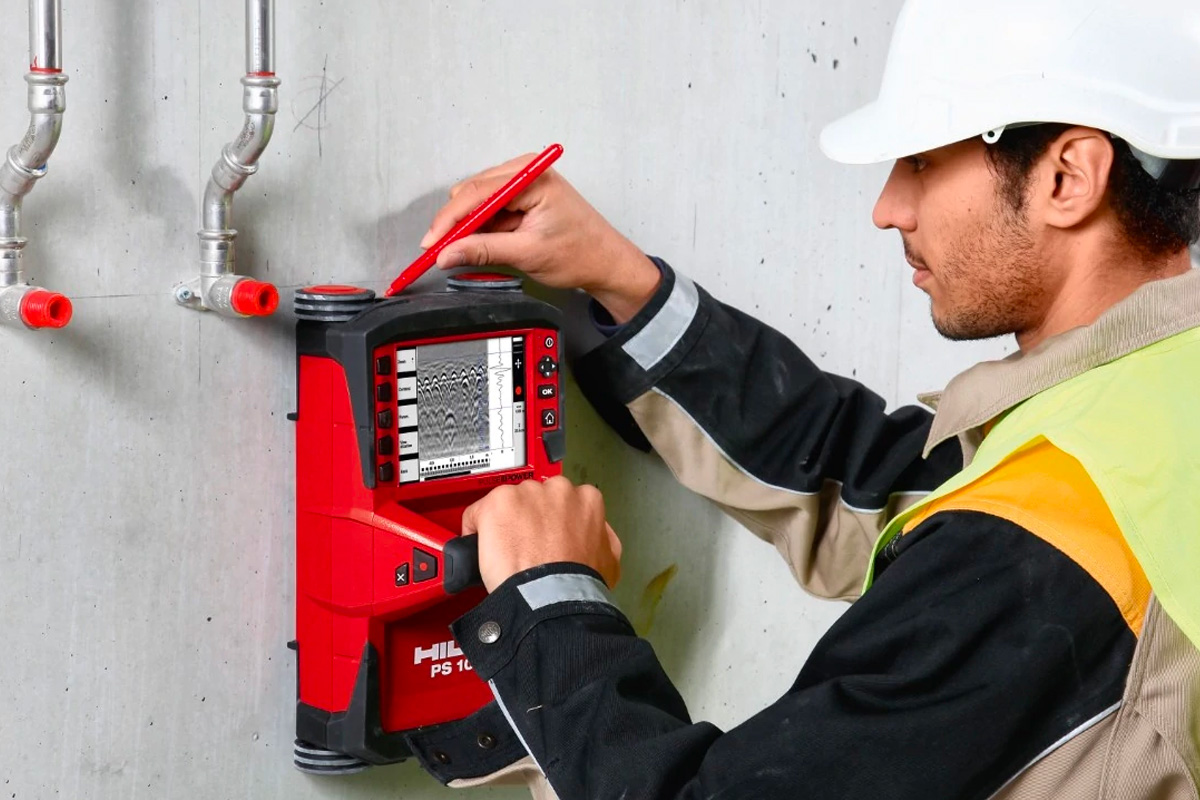Selecting the Right Concrete Scanning Tools
Selecting the Right Concrete Scanning Tools
Blog Article
Elevate Your Building Refine With the Strategic Insights of Concrete Scanning for Boosted Performance
One such technology that has actually changed the construction market is concrete scanning. By taking advantage of the critical understandings given by concrete scanning, construction specialists can unlock a realm of improved productivity and streamlined processes.

Advantages of Concrete Scanning
Enhancing task effectiveness and security, concrete scanning supplies a non-destructive method for identifying surprise items within concrete structures. By making use of modern technologies such as ground-penetrating radar (GPR) and concrete x-ray imaging, building and construction teams can properly locate rebar, post-tension cables, electric avenues, and other obstructions before drilling, reducing, or coring right into concrete.
The benefits of concrete scanning are various. Building websites can be complex environments, and knowing what exists below the surface area can prevent mishaps and injuries.
Furthermore, concrete scanning promotes total project performance by simplifying process and stopping rework. By determining possible concerns early on, groups can change their strategies proactively, conserving time and sources in the long run. In significance, the fostering of concrete scanning modern technologies is a strategic investment that pays rewards in regards to cost-effectiveness, security, and performance.
Technology Integration for Performance
Concrete scanning's ability to enhance operations and boost job efficiency can be further enhanced via tactical combination of advanced modern technologies. By integrating Structure Information Modeling (BIM) software into concrete scanning processes, construction groups can accomplish a greater degree of accuracy and sychronisation. Furthermore, the integration of Increased Reality (AR) innovation with concrete scanning can improve on-site visualization, permitting project managers and employees to overlay electronic information onto the physical setting in genuine time.
Staying Clear Of Costly Mistakes
Just how can careful interest to information throughout concrete scanning procedures assist building groups in avoiding costly mistakes? Concrete scanning plays a crucial duty in identifying possible problems prior to they intensify right into expensive mistakes. By making use of advanced scanning innovations such as Ground Passing Through Radar (GPR) and electromagnetic induction, building and construction groups can properly detect rebar, energies, gaps, and various other obstructions within concrete frameworks. This level of accuracy enables job supervisors to make informed decisions regarding the layout and layout of their building plans, lowering the danger of unexpected damages to important facilities throughout the building process. In addition, concrete scanning helps in guaranteeing structural honesty by identifying weak points or flaws in the concrete at an early stage, allowing for prompt repair work and adjustments. By proactively resolving these issues, construction teams can avoid expensive errors such as rework, hold-ups, or safety and security hazards that may develop from overlooked discrepancies in the concrete structure. Ultimately, purchasing comprehensive concrete scanning treatments verifies to be a cost-efficient technique over time, conserving both time and sources while boosting general task efficiency and top quality.
Enhancing Task Monitoring
Precise interest to detail throughout concrete scanning refines not only helps in preventing costly errors yet also lays a strong foundation for efficient project monitoring in building undertakings. By including concrete scanning technology into project administration approaches, construction groups can simplify workflows, boost interaction, and guarantee that projects remain on track.
Concrete scanning offers useful insights into the structural honesty of existing components, permitting job managers to make enlightened decisions relating to layout adjustments or construction series. link This positive method decreases the risk of unanticipated hold-ups or rework, inevitably saving time and resources. Furthermore, the data gotten from concrete scanning can be incorporated right into Structure Information Modeling (BIM) systems, making it possible for real-time cooperation and control amongst various stakeholders.
In addition, concrete scanning aids job supervisors identify potential dangers or challenges prior to they intensify right into larger concerns, promoting a more secure job atmosphere for all included. With improved visibility and accuracy offered by concrete scanning innovation, task managers can efficiently plan, check, and execute construction projects with greater efficiency and self-confidence.
Maximizing Performance
To improve productivity in building and construction jobs, applying reliable approaches and using advanced technologies is critical. Taking full advantage of efficiency includes enhancing processes, maximizing source appropriation, and reducing downtime. One crucial aspect of making best use of performance is via the fostering of concrete scanning innovation. By using ground-penetrating radar (GPR) and other scanning methods, construction teams can precisely situate rebar, conduits, and other subsurface elements, reducing the threat of expensive errors and hold-ups during excavation and boring.
Moreover, embracing Building Info Modeling (BIM) software program can dramatically boost performance by producing in-depth 3D designs that improve project visualization and sychronisation amongst various this trades. BIM permits far better clash discovery, enabling issues to be determined and settled prior to building and construction also starts, conserving time and resources over time.
Applying a lean building approach, which concentrates on removing waste and maximizing efficiency throughout all project stages, is one more effective strategy for maximizing productivity. By cultivating partnership, interaction, and continual improvement, building groups can function a lot more cohesively in the direction of attaining project goals in a streamlined and efficient way.
Conclusion
To conclude, the critical application of concrete scanning in the building and construction process provides countless advantages, consisting of increased effectiveness, expense savings, improved job administration, and boosted productivity. By incorporating this technology, building teams can prevent costly errors, streamline their operations, and optimize their overall project outcome. Concrete scanning is a beneficial device that can elevate the building process and lead to more successful and successful end results.

Report this page